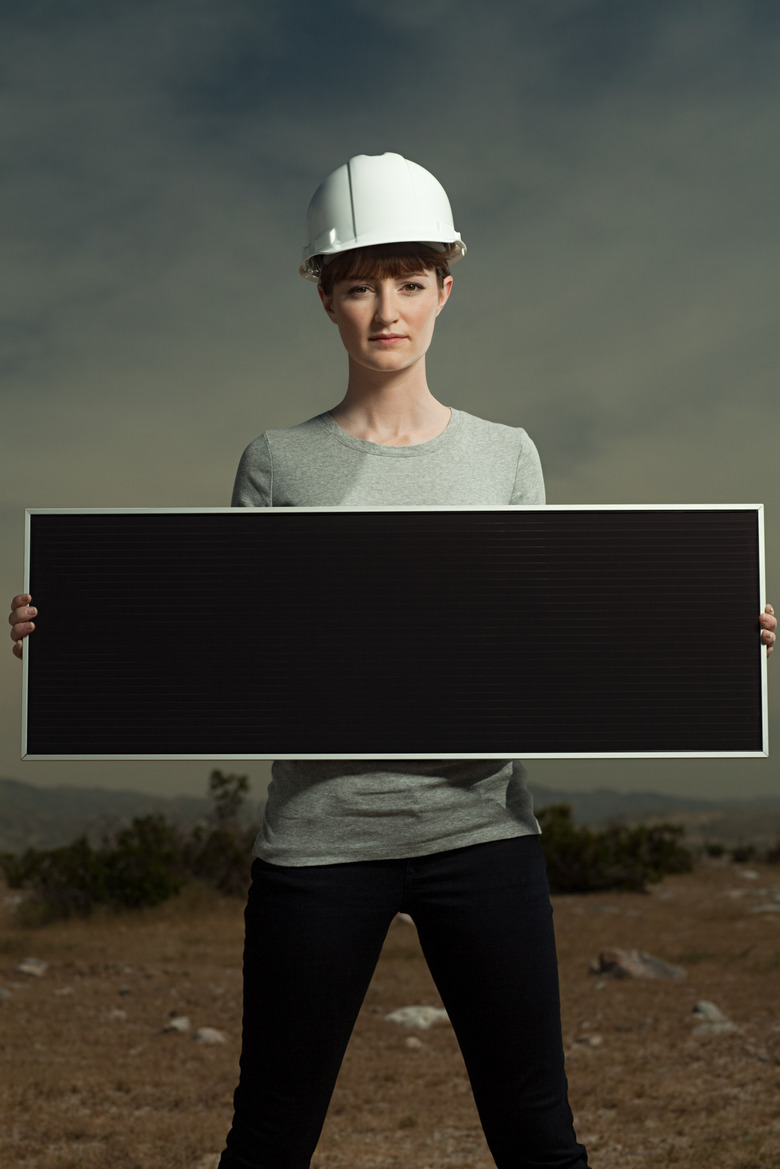The Part Of A Solar Panel That Absorbs Light
A photovoltaic solar panel consists of dozens of individual cells wired together to produce an output equal to the total of all the cells in the panel. The active material in each cell is silicon, the same element from which solid-state electronics are made. Silicon has photoelectric properties, generating current when you shine light on it.
Metalloids
Metalloids
A special group of elements called metalloids occupies a region between the metals and non-metals in the periodic table; metalloids have some properties of metals and some of non-metals. For example, metalloids can be brittle like non-metals but conduct electricity like metals. Two main examples of metalloid elements are silicon and germanium. Of the two, silicon has more uses in electronics because germanium has problems in environments warmer than room temperature.
Doped Silicon
Doped Silicon
A process called doping mixes tiny amounts of impurities into silicon, changing its electronic properties. For example, when silicon is doped with boron, it has a surplus of positive electrical charges. Doped with arsenic, silicon's charge becomes negative. A solar cell is a sandwich of two layers of silicon, one positive and the other negative. The two sides act as positive and negative terminals of a battery.
Photoelectric Effect
Photoelectric Effect
As light falls on the surface of a solar cell, the energy moves electrons in the silicon. Connected to a circuit, the solar cell becomes a source of electric current. Although the current provided by a single cell is small — on the order of a few milliamps — the currents of many cells in a solar panel ganged together provide several amps of current.
Silicon’s Response to Light
Silicon's Response to Light
In complete darkness, a solar cell produces no current. As the amount of light increases, so does the cell's output. The cell's maximum current is limited, however; any additional light beyond a maximum brightness produces no increased electrical output. In addition to brightness, the wavelength of the incident light also matters. A typical silicon solar cell responds to most of the visible and infrared parts of the sun's light spectrum, but some wavelengths in the yellow and red regions are absorbed poorly. Some of the infrared and all of the longer wavelengths pass through the solar cell and don't produce electricity.
Cite This Article
MLA
Papiewski, John. "The Part Of A Solar Panel That Absorbs Light" sciencing.com, https://www.sciencing.com/part-solar-panel-absorbs-light-18993/. 24 April 2017.
APA
Papiewski, John. (2017, April 24). The Part Of A Solar Panel That Absorbs Light. sciencing.com. Retrieved from https://www.sciencing.com/part-solar-panel-absorbs-light-18993/
Chicago
Papiewski, John. The Part Of A Solar Panel That Absorbs Light last modified March 24, 2022. https://www.sciencing.com/part-solar-panel-absorbs-light-18993/
